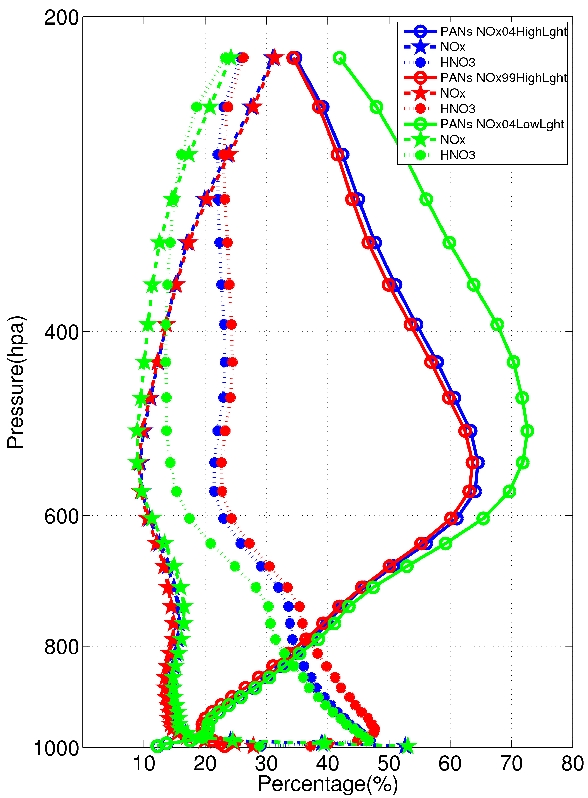Research Highlights October 2010 : Fang et al.
Study by Yuanyuan Fang and co-authors on the Sensitivity of the NOy budget over the United States to anthropogenic and lightning NOx in summer.
The study by Fang
et al. [2010] examines the implications of new
estimates of the anthropogenic and lightning nitrogen oxide (NOx)
sources for the budget of oxidized nitrogen (NOy) over the
United States in summer using a 3-D global chemical transport model
(MOZART-4). NOy export and burden response less than
linearly to either NOx emission changes due to the NOy
partitioning change and the corresponding lifetime change. Lightning
NOx contributes 24%?43% of the free tropospheric (FT)
NOy export from the U.S. to the North Atlantic and 28%?34%
to the NOy wet deposition over the United States.
Increasing lightning NOx decreases the fractional
contribution of PAN to total NOy export and decreases the
FT ozone (O3) production efficiency. Therefore, a model
with biased low lightning NOx would lead to biased high
downwind O3 responses due to anthropogenic NOx
emission regulations. Better constraints on the lightning NOx
source are required to more confidently assess the impacts of
anthropogenic emission regulations on air quality over downwind
regions.

Figure caption:
Relative contribution of the major NOy
components to the total NOy flux through the east wall
(67.5°W, from 24°N?48°N) of the United States in the
NOx04LowLght (green), the NOx04HighLght (blue), and the NOx99HighLght
(red) simulations.
Reference:
Fang, Y, Arlene M Fiore, Larry Horowitz, Hiram Levy II, Y Hu, and A G. Russell, 2010, Sensitivity of the NOy budget over the United States to anthropogenic and lightning NOx in summer. Journal of Geophysical Research, 115, D18312, doi:10.1029/2010JD014079.


